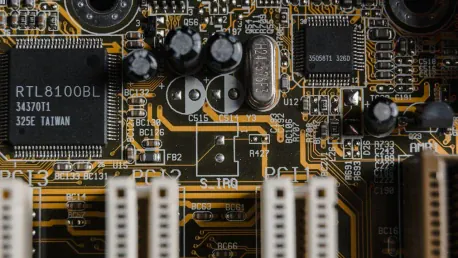Google’s recent advancement in quantum computing, marked by the launch of its quantum processor named Willow, has sparked significant discussion and concerns within the crypto community. Willow features a substantial increase in computational capacity, doubling the number of qubits compared to previous quantum machines, while also managing to mitigate the instability typically associated with additional qubits. This positions Willow as a formidable development with the potential to execute tasks at a pace dramatically faster than traditional supercomputers—completing tasks in minutes that would otherwise take trillions of years.
The Quantum Threat to Bitcoin’s Security
Bitcoin’s Cryptographic Foundations
Bitcoin’s security infrastructure is built on cryptography, specifically the SHA-256 algorithm, which has remained immune to brute-force attacks from classical computers. However, the growing capabilities of quantum machines, exemplified by Willow, introduce a potential vulnerability, pushing the feasibility of a successful attack closer to reality. This breakthrough raises critical questions about Bitcoin’s security, which has remained uncompromised since its inception 15 years ago.
SHA-256 serves as the cryptographic backbone for Bitcoin, ensuring the integrity and security of transactions. The cornerstone of this system relies on the computational limits of classical computers, which are currently incapable of breaking SHA-256 encryption through brute force. However, the rapid advancements in quantum computing suggest that this may not always be the case. As quantum processors like Willow become increasingly powerful, the potential for them to solve complex cryptographic puzzles faster than traditional computers could undermine the security of SHA-256.
Implications for Digital Security
The implications of such quantum advancements extend well beyond Bitcoin. SHA-256 is a cornerstone in securing a wide array of online information, including passwords and digital signatures. As noted by Zack Gall, CCO of the EOS Network Foundation, the ability of Willow or any quantum computer to breach Bitcoin’s cryptographic defenses would pose a significant threat to the very backbone of modern digital security systems. This necessitates an urgent and comprehensive redesign of digital infrastructure to adapt to the new computational paradigm.
The current digital security landscape relies heavily on cryptographic algorithms like SHA-256 to protect sensitive information. If these algorithms were to be compromised by quantum computers, it would necessitate a shift towards quantum-resistant cryptographic methods. The cryptographic community is already exploring alternatives, but the transition would require a significant overhaul of existing systems. Furthermore, the potential risk extends to other cryptocurrencies and digital assets, which also rely on SHA-256 or similar algorithms for security. The broader implications for digital security mean that industries ranging from finance to healthcare must prepare for the eventuality of quantum-capable adversaries.
Challenges in Upgrading Decentralized Networks
Decentralized Nature of Public Blockchains
One of the distinct challenges here is the decentralized nature of public blockchains. Unlike centralized systems that can promptly deploy patches or fixes, Bitcoin and Ethereum, being decentralized, face a more arduous and slower upgrade process. Any necessary upgrade to quantum-resistant protocols could be particularly challenging to implement across a decentralized network, potentially leading to divisive hard forks or the need to create new quantum-resistant wallets.
The decentralized nature of blockchains, one of their greatest strengths, also poses significant challenges when it comes to implementing widespread changes. Coordinated upgrades in such networks require consensus from a majority of participants, which can be time-consuming and contentious. In the case of Bitcoin and Ethereum, upgrading to quantum-resistant cryptographic protocols would not only require technical innovations but also community agreement on the path forward. This could result in hard forks, where the blockchain splits into two separate versions, leading to potential fragmentation of the network.
Transitioning to Quantum-Resistant Protocols
Transitioning existing blockchain wallets to these new standards demands extensive coordination and could consume significant block space, requiring months of dedicated transactions. Bitcoin developer Jameson Lopp, in his recent speech at the Future of Bitcoin event, emphasized the importance of preparing for these quantum threats and outlined the critical challenges the community must address. In the face of these looming threats, the prevailing sentiment within the crypto community is not one of panic but preparedness.
The transition to quantum-resistant protocols is a monumental task that involves upgrading not only the cryptographic algorithms but also the infrastructure that supports them. This includes wallet software, nodes, and consensus mechanisms. The large-scale coordination required for such changes means that developers, miners, and users must work in unison. Additionally, the new quantum-resistant protocols may be less efficient than their current counterparts, leading to increased computational demands and slower transaction times. Despite these challenges, the crypto community remains committed to ensuring the long-term security and viability of blockchain networks in the face of quantum threats.
Current Quantum Capabilities and Future Preparations
Quantum Computing’s Current Limitations
Current estimates suggest that a quantum computer would need 24 hours and around 13 million qubits to reverse engineer a Bitcoin key from its SHA-256 hash, with Willow still far from this capability with its 105 qubits. Furthermore, since Bitcoin transactions expose the public key only briefly, an attack remains out of immediate reach, providing the community with a window to prepare adequate defenses.
The current state of quantum computing, while impressive, still falls short of the capabilities needed to compromise Bitcoin’s security. Willow’s 105 qubits represent a significant advancement, but it is still far from the estimated 13 million qubits required to reverse engineer a SHA-256 hash. This gives the crypto community a critical window of time to bolster their defenses. Moreover, the limited exposure of Bitcoin public keys during transactions means that even if a quantum computer could generate a private key from a hash, it would need to act within a very short timeframe to execute an attack successfully.
Proactive Preparation in the Crypto Community
Within this context, the overarching consensus in the crypto community is the need for proactive preparation against potential quantum threats. Shady El Damaty, co-founder of identity protocol Holonym, underscores the necessity for comprehensive post-quantum migration strategies to ensure that current sensitive data remains secure in the future. The community’s awareness of quantum risks and the ongoing preparations, albeit lacking a concrete plan for every public blockchain, signify positive steps toward readiness.
The crypto community’s response to the looming quantum threat has been one of vigilance and proactive planning. Industry leaders and developers are actively researching and developing post-quantum cryptographic solutions to safeguard digital assets. Conferences and events dedicated to quantum-resistant blockchain technologies highlight the urgency and commitment within the community to address these challenges head-on. While there may not yet be a universally accepted plan for transitioning to quantum-resistant protocols, the collaborative efforts and shared sense of responsibility suggest that the community is well-positioned to adapt to future advancements in quantum computing.
Developing Quantum-Resistant Solutions
Ongoing Efforts in Quantum-Resistant Cryptography
Notably, quantum-resistant cryptographic solutions are already under development. Segments of the Ethereum developer community are exploring such solutions, and projects like Avalabs’ Avalanche blockchain are integrating lattice cryptography, specifically designed to be resistant to quantum attacks. The scale of institutional investments in Bitcoin further assures that resources will be allocated towards developing and implementing robust, quantum-resistant solutions.
The Ethereum developer community has been at the forefront of exploring quantum-resistant cryptographic methods. Their focus on implementing solutions like lattice cryptography aims to create a secure foundation against future quantum threats. Similarly, projects like the Avalanche blockchain have integrated lattice-based algorithms to enhance their security frameworks. These efforts represent a broader trend within the crypto industry to prioritize research and development in quantum-resistant cryptography. Institutional investors, recognizing the importance of long-term security, are also directing resources towards these initiatives, further supporting the advancement of quantum-resistant technologies.
Catalyzing Action Within the Crypto Industry
Google’s recent strides in quantum computing, highlighted by their introduction of the Willow quantum processor, have ignited considerable debate and unease within the cryptocurrency sector. Willow boasts a significant boost in computational power, doubling the number of qubits from previous quantum systems. Even more impressively, it addresses the instability that additional qubits usually bring. This advancement positions Willow as a groundbreaking leap, capable of executing tasks in mere minutes that would typically take even the most advanced supercomputers trillions of years. The crypto community’s concern is understandable, given the implications this technology could have on encryption and data security, potentially rendering existing cryptographic methods obsolete. Willow’s capabilities raise questions about the future of data protection and the need for advancements in cryptographic techniques to keep pace with such rapid technological progress.









